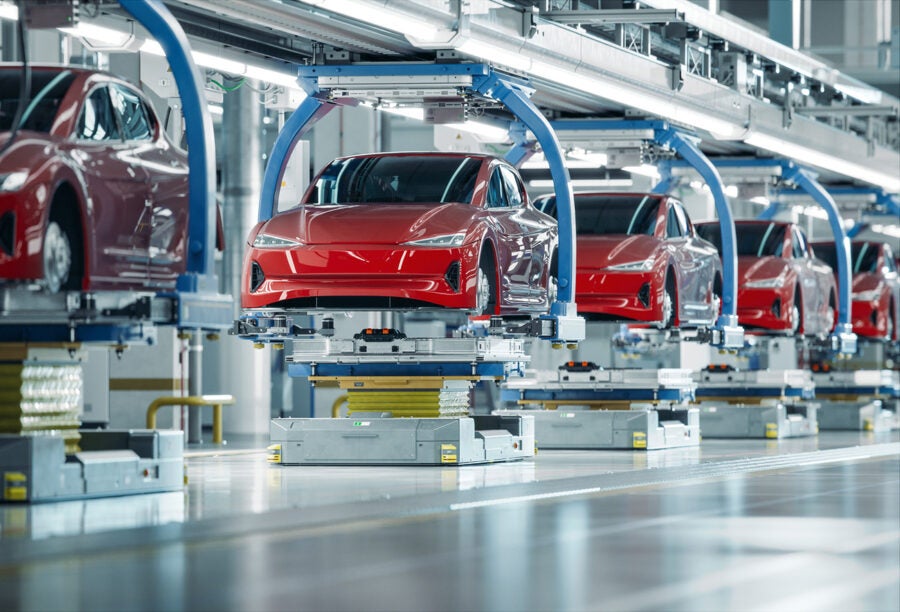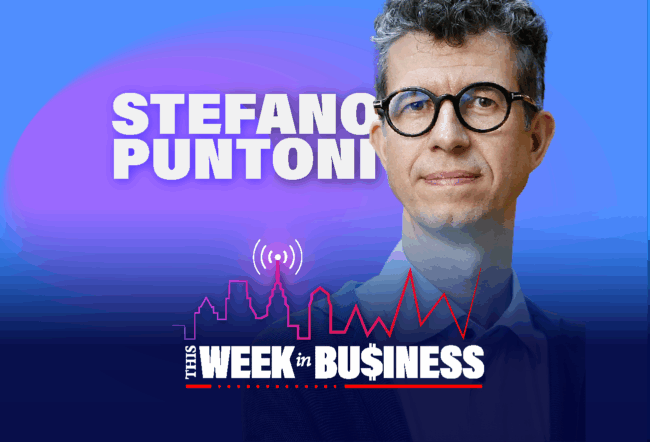The following article was written by John Paul MacDuffie, Wharton management professor and director of the School’s Program on Vehicle and Mobility Innovation.
As the U.S. imposes 100% tariffs on Chinese electric vehicles and Europe follows with its own barriers, we risk missing the bigger picture. China’s automotive strategy extends far beyond EVs — in Mexico, Chinese manufacturers now account for 20% of new vehicle sales.
The U.S. needs more than protective tariffs. We need a comprehensive industrial strategy that addresses the entire supply chain. This means investing in processing and manufacturing capabilities, not just R&D. It means maintaining consistent policy support for emerging technologies rather than reversing course with each administration. And it means recognizing that in today’s automotive industry, intellectual property and manufacturing expertise are inextricably linked.
Consider the irony: The lithium iron phosphate (LFP) battery technology that China’s CATL has turned into a global competitive advantage was originally developed in the U.S. While we excel at innovation, we lack the patience and industrial strategy framework to develop these innovations into market-ready products. This pattern keeps repeating: American innovation, followed by overseas commercialization.
It’s a pattern that has become painfully familiar. The U.S. pioneered not just LFP batteries but also lithium-ion technology itself at Texas Instruments and key elements of battery management systems at national laboratories. Yet today, China controls more than 75% of global battery production capacity and an even larger share of processing for critical materials. The story of American innovation lost to foreign commercialization extends to flat-panel displays, drones, and solar panels. Each time, we master the science but fumble the transition to manufacturing scale.
While we excel at innovation, we lack the patience and industrial strategy framework to develop these innovations into market-ready products.
A crucial and missing link, for EV batteries and beyond, is the processing and refining of critical minerals. Even if we secure supplies from friendly nations (an increasingly complex calculation in today’s geopolitical environment), China dominates the crucial middle step of processing these materials. The Inflation Reduction Act made a promising start in addressing these supply chain vulnerabilities, but current congressional moves to roll back its provisions, coupled with potential emissions regulation reversals, risk putting us even further behind.
Meanwhile, Chinese manufacturers are executing a sophisticated regional manufacturing strategy. They are establishing production bases in Thailand, Vietnam, Mexico, and Eastern Europe, often in partnership with local firms. This means that attempting to block Chinese EVs through targeted tariffs is like playing whack-a-mole — we’d need to impose barriers on virtually every manufacturing location to keep Chinese competitors at bay.
A more nuanced approach could involve domestic content requirements, where tariff reductions are tied to the use of U.S.-made components up to certain value thresholds. This policy could be particularly effective for SUVs and pickup trucks manufactured in Mexico or Japan or elsewhere, which already face a 25% tariff. But even this strategy would require careful crafting to ensure meaningful integration with U.S. supply chains rather than token compliance.
China’s regional manufacturing strategy is already bearing fruit. BYD’s $1 billion investment in a Turkish factory gives it tariff-free access to the EU market, while its Hungarian plant leverages Eastern Europe’s existing automotive supply chains. Similar patterns are emerging in Southeast Asia, where Chinese manufacturers are moving into facilities once operated by Japanese firms.
In Mexico, Chinese presence is growing through multiple channels: BYD’s successful battery electric and hybrid vehicle sales, U.S. brands selling Chinese-made ICE vehicles, and a complex web of component supply that flows both directly from Chinese-owned plants (locally and globally) and through assembled vehicles. Indeed, half of the vehicles made in China and sold in Mexico were made by GM in their Chinese plants.
Without a coordinated national strategy … the U.S. risks becoming a bystander in the greatest transformation of the auto industry since Henry Ford’s assembly line.
Remember Japan
The Japanese auto industry’s expansion in the 1980s offers an instructive but imperfect parallel. When faced with U.S. import restrictions, Japanese manufacturers built factories in America, creating jobs and transforming our automotive landscape — a pattern they continue today.
China presents unique challenges: Beyond its sophisticated regional manufacturing networks, concerns arise from state subsidies, military connections, and labor practices. Even if Chinese manufacturers invest in U.S. production with strong domestic content and fair labor standards (as some have, like Nexteer), national security considerations — particularly military ties — distinguish this situation from Japan’s integration into the U.S. market.
More is at stake than economics. The global transition to electric vehicles represents a crucial step in retaining a domestic auto industry (which we need for national security reasons) and addressing climate change. China has made this transition a national priority, combining industrial strategy, infrastructure development, and market incentives. Their success is not only because of lower costs; it reflects a systematic approach to building industrial capabilities.
The reality is stark: Without a coordinated national strategy that combines R&D support, manufacturing policy, and supply chain development, the U.S. risks becoming a bystander in the greatest transformation of the auto industry since Henry Ford’s assembly line. Carefully crafted tariffs could help build U.S. capabilities — as the Biden administration attempted by combining tariff protections with emissions regulations to accelerate domestic investments.
Such policies need dynamic adjustment: Subsidies and tariffs can be gradually reduced as market share grows and competition increases, but only after U.S. companies have had time to catch up to advantages built on China’s massive government support, loan guarantees, and labor cost advantages from weak unions and concerning labor practices. While Congress debates rollbacks and restrictions, China is laying the groundwork for decades of industrial dominance. We should not just be protecting markets — we should be building them.
As one Chinese executive recently told me, “The question isn’t whether to go global, but how to do it sustainably and successfully.” It’s a question American policymakers would do well to consider — while also examining how their actions might put U.S. automakers into a U.S.-shaped box that could tip them into a difficult-to-reverse decline.



